Istanbul Airport (Turkish:İstanbul Havalimanı) is located in the Arnavutköy district on the European side of Istanbul city,by the Black Sea shore. It is situated at the junction of Çatalca- Göktürk-Arnavutköy, between the Tayakadın and Akpınar villages.
The first phase of the Istanbul Airport, which is the largest infrastructure project in the history of the Turkish Republic, opened for service on October 29, 2018; since April 6th 2019, the airport is operational with all units and at full capacity.
It total cost €10.3 billion ($11.6 billion).
Covering an area of 76,5 million square meters, the new airport serves as a global hub between Asia, Africa and Europe.
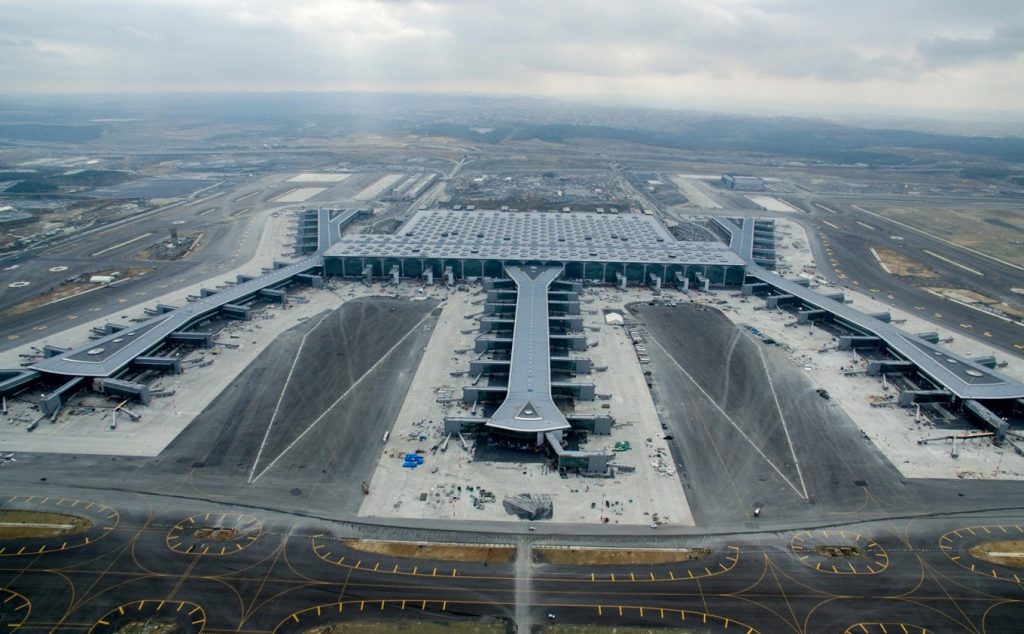
Construction history
The groundbreaking ceremony took place on 7 June 2014, though construction only started in May 2015 after the land was officially handed over.
the first test landing at the airport would take place on February 26, 2018;
the first landing took place on 20 June 2018. Testing of navigational and electronic systems with DHMİ aircraft had begun on 15 May 2018.
The inauguration of the airport took place on the planned date of 29 October 2018.
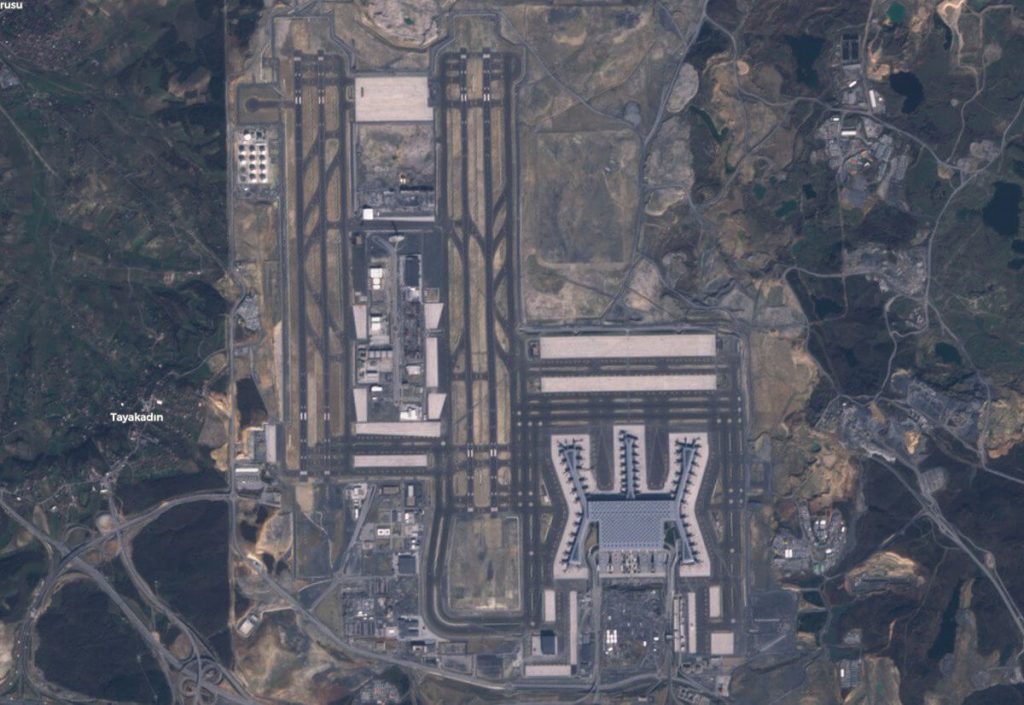
Main parameters of the building
Istanbul airport represents a €10.3 billion ($11.6 billion) investment in all its phases, adding that it will provide nearly €22.2 billion ($25.3 billion) in revenue to the government.
The €6 billion ($7.2 billion) first stage, which was built in nearly three years through a public-private partnership model, is one of a series of mega-projects planned for Turkey’s 2023 centennial.
Spread over an area of nearly 76.5 million square meters, the airport is really a giant work, with six separate runways, parallel taxi ways, nearly 2 million square meters of indoor area, a rail system between terminals, cargo and general terminals, outdoor and indoor parking areas, leisure centers.
two runways — stretching 3,750 and 4,100 meters long — went into service as a part of the first phase, including three separate airstrips.
At full capacity — with the completion of all four phases with six runways — Istanbul Airport is set to become a global aviation hub by hosting more than 100 airlines and flights to over 300 destinations around the world.
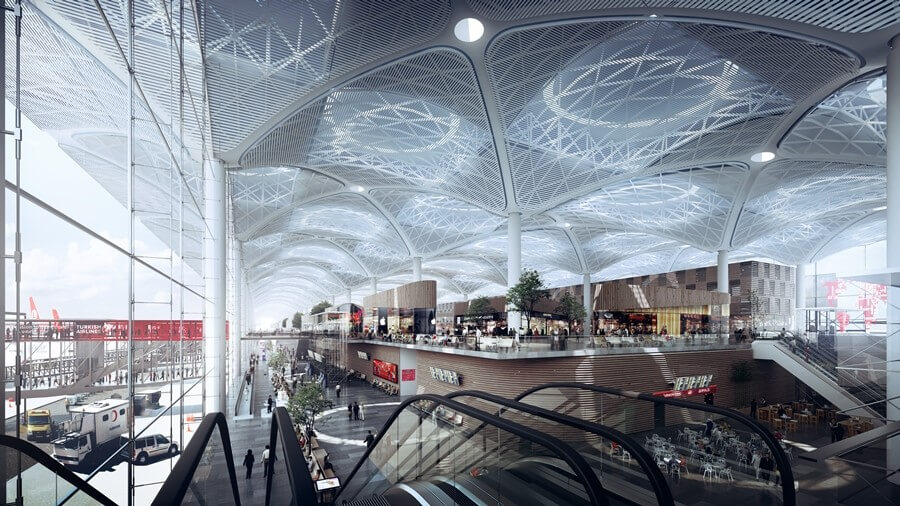
Air traffic control tower
The ground-breaking ceremony for the air traffic control (ATC) tower was held in October 2016. Designed in the shape of a tulip, the tower earned International Architecture Award by the Chicago Athenaeum in September 2016.
The 90m-tall ATC tower occupies 6,085m2 of space and has 17 floors along with the basement and the control floors. Fitted with glass façade, the outdoor terraces offer panoramic view.
The control tower is in the shape of the Turkish national flower, the tulip.
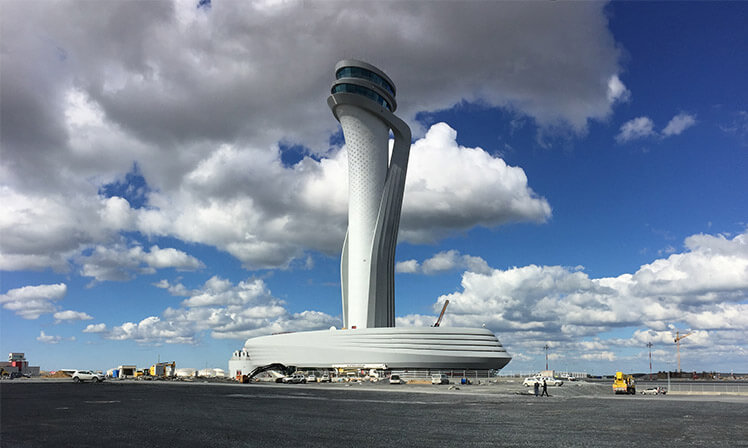
Duty Free Commercial District
A unique shopping experience blended with the selective brands and modern retail concept awaits the passengers of Istanbul Airport.
Operating in retail business for over 30 years, Unifree Duty Free has a total sales area of 55,000 square meters, including elite boutique shops of 18,000 square meters, classical Duty Free stores of 34,000 square meters and a Bazaar area of approximately 3,000 square meters, where local products are offered.
Designed for passengers to feel the sense of belonging particular to Istanbul, Duty Free area consists of 9 sections housing different concepts, including Fashion Garden, Family Palace, High&Lux Hills, Style Beach.
Each section welcomes passengers with concept-related selective brands. The rich variety of product groups offered to guests includes accessories, jewelry and watches, kids wear, toys, home textile, electronics from luxurious, premium, besides accessible local and international brands.
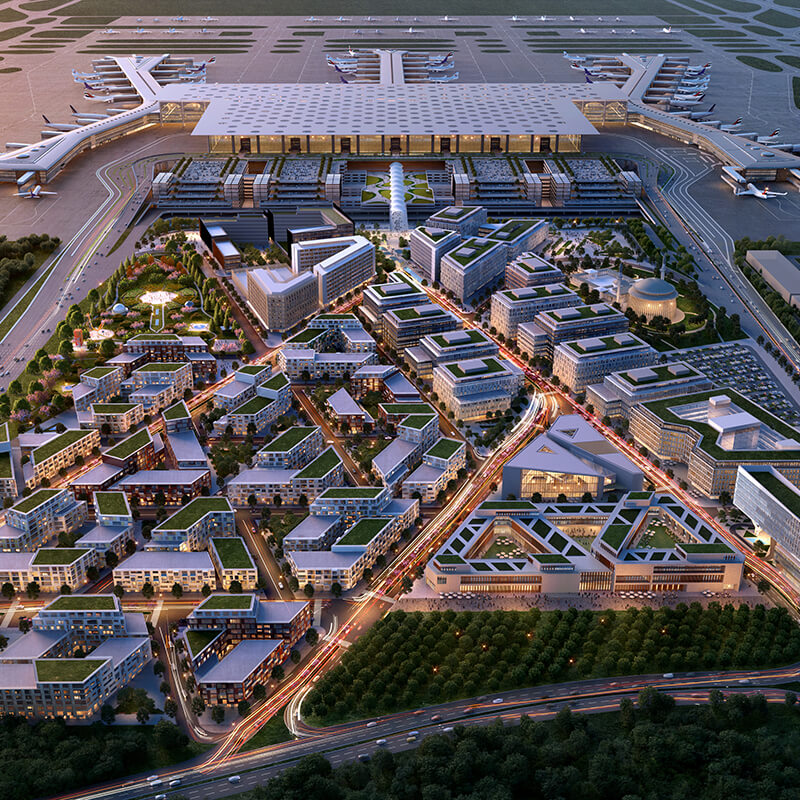
Phase planning of the project
The construction of the airport is taking place in several stages, expanding the airport and its facilities over time.
Phase 1
The first stage consists of the main terminal, with an annual passenger capacity of 90 million and an area of 1,440,000 m2 (15,500,000 sq ft).
There will also be two pairs of parallel runways connected to eight parallel taxiways to the west of the main terminal, approximately 4,000,000 m2 (43,000,000 sq ft) of apron space, and an indoor car-park with a capacity of 12,000 vehicles.
In addition, the airport will feature three technical blocks for repairs, maintenance, and fueling, as well as an air traffic control tower, eight ramp control towers, and hangars for cargo and general aviation aircraft.
Several other services are also to be in operation, including hospitals, frequent-flyer and VIP lounges, prayer rooms, convention centers, and hotels; some of these are expected to form part of the Istanbul Airport City project.
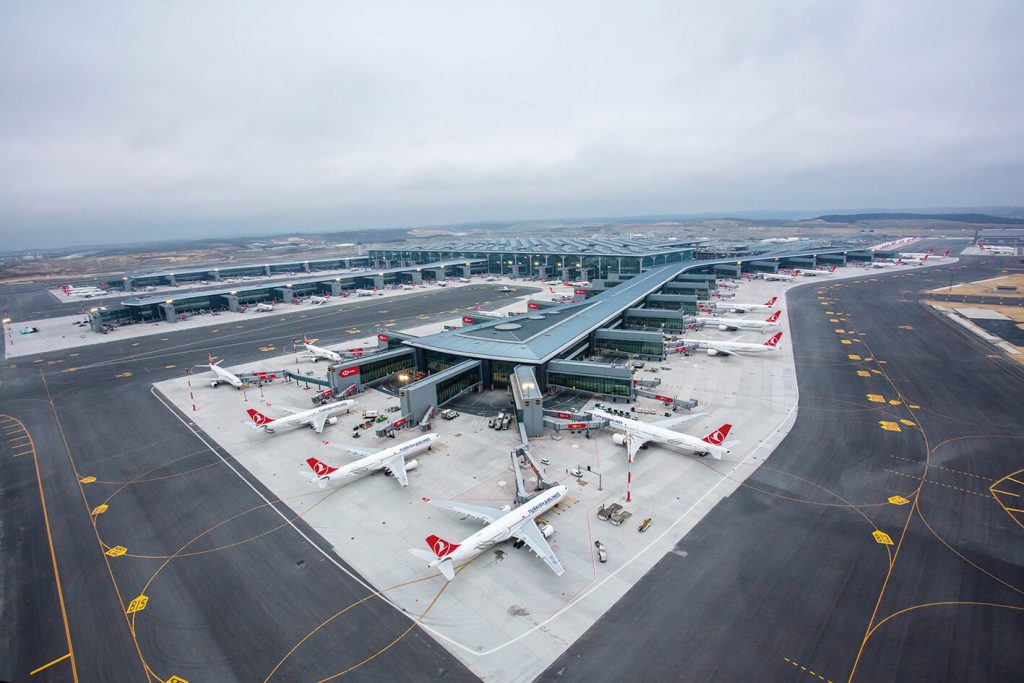
Phase 2
The second stage will add a third independent runway to the east of the main terminal, as well as a fourth remote runway with an east–west heading and additional taxiways and apron areas.
Phase 3
The third stage is planned to add a second passenger terminal with a capacity of 60 million annual passengers and an estimated area of around 960,000 m2 (10,300,000 sq ft), as well as an additional runway and a new support facilities area.
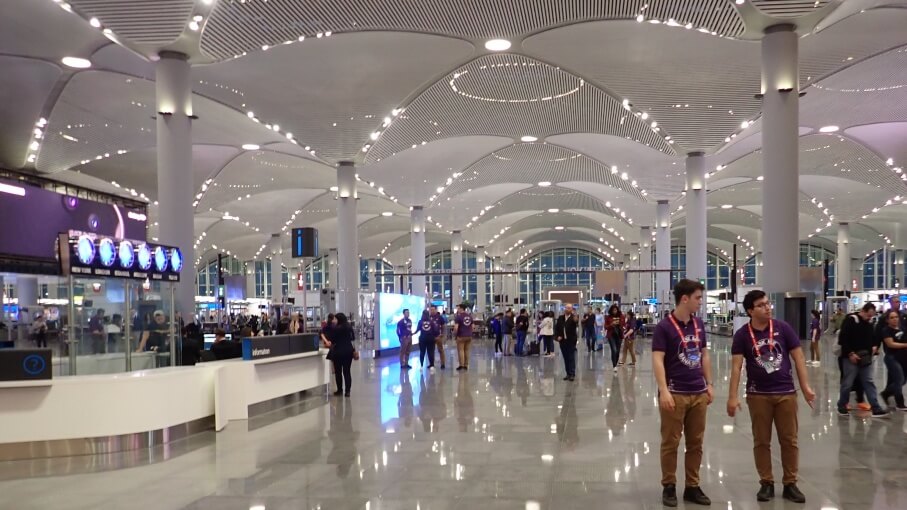
Phase 4
The final and fourth stage of expansion will, along with adding another runway, allow for the construction of satellite terminals with a combined capacity of 50 million passengers and area of up to 800,000 m2 (8,600,000 sq ft) if needed.
Once fully completed by 2025, the airport will have six sets of runways (eight in total), 16 taxiways, and a total annual passenger capacity of 150 million passengers.
If fully expanded to a capacity of 200 million, the airport will exhibit four terminal buildings with interconnecting rail access that combine for a total indoor area of 3,200,000 m2 (34,000,000 sq ft).
The airport will also have a 6,500,000 m2 (70,000,000 sq ft) apron with a parking capacity of 500 aircraft, VIP lounges, cargo and general aviation facilities, a state palace, and indoor and outdoor parking that can accommodate up to 70,000 cars.
A medical center, aircraft rescue and firefighting stations, hotels, convention centers, power plants, and wastewater treatment facilities will also be built.
Value Significance
Istanbul Airport has been honored with one of Global Traveler’s Leisure Lifestyle awards in the ‘Outstanding Innovation’ category. The publication, which is among the most prestigious in the global tourism sector, picked Istanbul Airport for its ‘Special Achievement Award’ . Once all phases of the airport are operational, the facility is expected to achieve a capacity of 200 million passengers.
the new airport will put Turkey on track to become the most important transit center between north, south, east and west by connecting 60 countries with economies totaling $20 trillion.
Thanks to the new airport, Turkey will improve its key role in the integration of global economies.
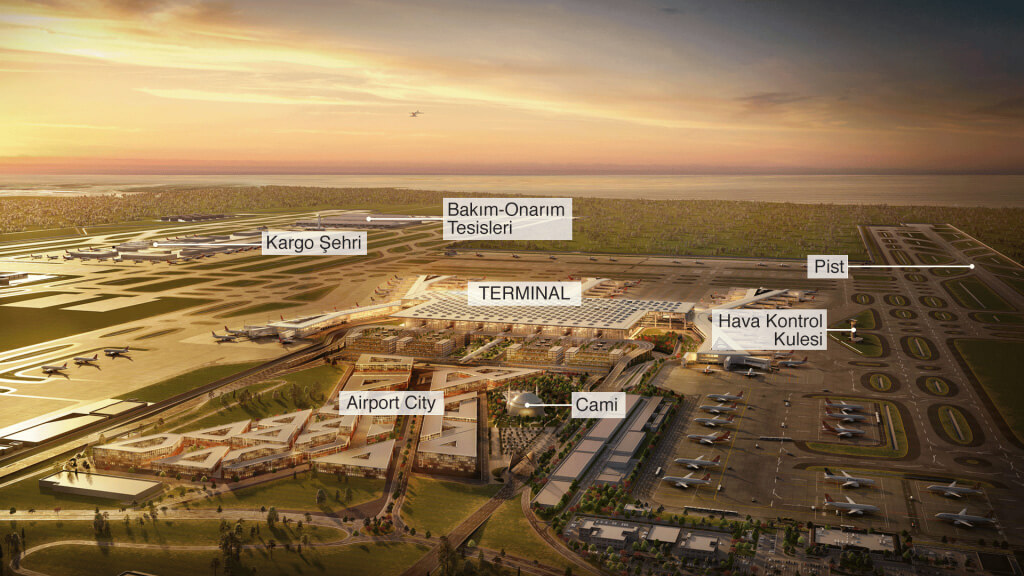
Istanbul Airport Data
- English name
- Istanbul Airport
- Country
- Turkey
- Region
- Western Asia
- Status
- In use
- Official name
- İstanbul Havalimanı
- Location
- Arnavutköy, Istanbul
- Owner(s)
- General Directorate of State Airports (DHMİ)
- Official website
- www.istairport.com
- Operator(s)
- IGA (Istanbul Grand Airport) Havalimanı İşletmesi A.Ş.
- Cost
- €10.3 billion (US $11.6 billion)
- Began
- May 1,2015
- Opened
- October 29,2018
- Airfield area class
- 4F
- Airport type
- Public
- Airport code
- IATA:ISL ICAO:LTBA
- Airport area
- 18904 acres / 76.5 km²
- Terminal area
- 356 acres / 1440000 m²
- Main terminal area
- 356 acres / 1440000 m²
- Commercial area
- 14 acres / 55000 m²
- Stores number
- 291(2020)
- Runway length
- 1*3750 m, 1*4100 m,
- Navigable city
- 249(2020)
- Passenger traffic
- 52.578 million(2019)
- Freight volume
- 852,943 tons (2019)
- Takeoffs and landings
- 329,799 sorties (2019)
View Istanbul Airport on Google Satellite Map
Google satellite maps allow you to see building details more clearly, including natural landscapes such as mountains, rivers, deserts, sea and man-made engineering buildings.
If you are very interested in this engineering building, it is a good idea to click below Google Map icon. We will help you jump to the corresponding location of this building or engineering on Google satellite map.





























































